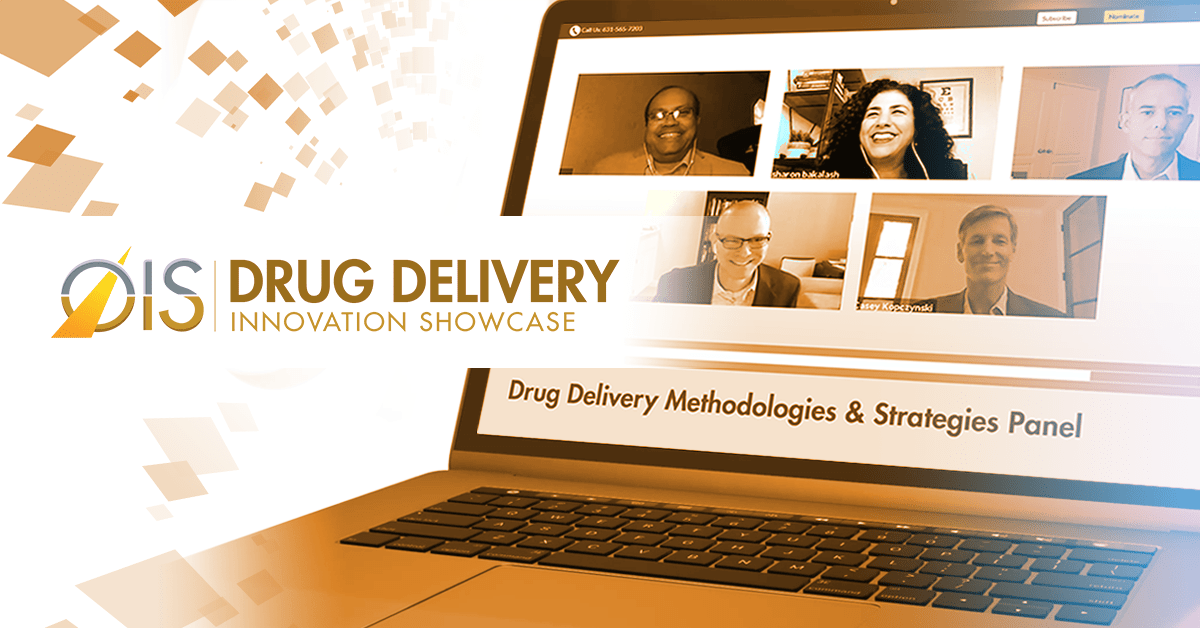Exploring Why Pharma Hesitates to Embrace Drug-Delivery Methodologies

Drug-delivery technologies typically aim to improve pharmacologic and therapeutic properties of already approved drugs, but pharmaceutical companies are sometimes hesitant to acquire, develop, or invest in them. The “Drug Delivery Methodologies and Strategies Panel” at last week’s OIS Drug Delivery Innovation Showcase explored the reasons why.
“These technologies offer relatively obvious ways of attacking high unmet needs like treatment burden reduction or creating life-cycle management solutions for existing products,” said panel moderator Sharon Bakalash, MD, PhD, CBA, founder and CEO of SB Strategic Development Consultants. She asked the panel to discuss why.
Hurdles to Drug Delivery Platforms
Developing drugs requires different skills than developing mechanical devices, said Joshua Horvath, PhD, director, device and packaging development, Genentech. “If you look at my group within Genentech, our entire department is probably 70% mechanical engineering, and that’s not the majority of Genentech as a whole,” he said. “So we don’t always have all those capabilities in a pharma company.”
He noted that in ophthalmology, many drug-delivery technologies have failed. “We don’t really have the manpower to invest, going through an endless list of ideas trying to figure out which ones will be successful,” Dr. Horvath said.
Proof of concept, preferably an advanced one, is key for a drug-delivery platform, said Casey C. Kopczynski, PhD, chief scientific officer and co-founder, Aerie Pharmaceuticals. The concept should demonstrate the power of the technology, he continued. It should be clinic-ready and preferably have clinical data supporting it.
“Platform technologies in general are more challenging to value, because you are trying to agree with a potential partner on what the future value is of products that perhaps have not even been contemplated yet,” added Dr. Kopczynski.
Jim Cunningham, executive director of drug delivery and pharmaceutical development, Allergan/AbbVie, pointed out that many pharmaceutical companies tend to emphasize innovation around a newly discovered molecular entity.
Key Interests
Noting Aerie’s programs in retinal disease, Dr. Kopczynski stated, “We think there is a real opportunity to bring more small-molecule chemistry into the back of the eye.” Such a small-molecule sustained-release system, providing a duration of effect of four to six months, would create opportunities for multiple retinal disease therapies, he added.
Reza Haque, MD, PhD, SVP and global head of the ophthalmic innovation center at Santen, said injections to the back of the eye are too frequent and create a great deal of burden for patients and doctors. “If you could extend it to six months or more, it would be much better for all parties,” he said. For the front of the eye, Santen is looking at dry eye disease and allergy, and antibiotics. There should be a delivery method to replace eye drops that need to be taken throughout the day, he said.
Dr. Horvath of Genentech said a need for improved delivery to the back of the eye exists, and that the Port Delivery System with ranibizumab implant is a technology that could be applied to similar molecules. He noted that Genentech’s direction is localized, targeted delivery, whether in the front or back of the eye. “I see things like gene therapy that are going to require specific local delivery,” he added.
Platforms for New Products
Dr. Bakalash asked the participants if they would consider investing in a drug-delivery platform that doesn’t take on an existing product, and if so what the parameters would be.
Dr. Horvath of Aerie responded, “The answer is yes, if you can see a match with a future portfolio,” and added, “We’re always trying to predict the future.”
Dr. Kopczynski said Aerie is open to technologies that would be focused on something other than the drugs they are developing. “You have to be willing, and even eager, to seek out other people’s ideas,” he said.
Cunningham said Allergan is willing to adapt and build capability to enable new opportunities, and Dr. Haque said Santen is very open to new technologies.
Holy Grail
“No moving parts” are what Dr. Horvath wants most in a drug-delivery platform. “If it can be somewhat independent of the drug molecule and doesn’t require a complex chemical process to integrate the drug with the delivery technology, that’s certainly going to be easier to leverage across different molecules,” he said.
There can’t be a single holy grail delivery developed for the front and back of the eye, said Dr. Kopczynski, because the technology typically begins by targeting a particular tissue, and that leads to variations in how the technology works. “The less complex the better,” he explained, “but you also have to learn to accept some need for collecting empirical data for exactly what you’re interested in.”
Topical delivery of back-of-the-eye agents is another holy grail possibility, Allergan’s Cunningham pointed out, acknowledging the concept faces tremendous challenges.
Dr. Haque noted that Santen is working on that challenge, but that while some drug reaches the back of the eye, the concentration isn’t adequate.
